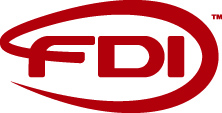Process system owners are always on the lookout for new, flexible production methods and customer-oriented business models. Profitability as a key aspect of industrial systems is always kept in view here. Against the background of innovations from Industrie 4.0, in particular, communication systems are the main driving force for increasing the profitability of these types of systems, which have to work for years without interruption in rough process industry environments. This being the case, the automatic interaction of different systems and components from different manufacturers must be continuously ensured and business processes between chemical companies, suppliers, customers etc. also have to run smoothly. Discussions about Industrie 4.0, networked production and intelligent communication promise great potential for new methods, processes and technologies.
PROFIBUS PA
With PROFIBUS PA, PROFIBUS & PROFINET International (PI) has provided a successful basis for the transition to field communication digitalization. PROFIBUS PA enables long cable distances and explosion protection for the harsh environments of process automation and offers complete digital integration of field instrumentation in control and asset management systems.
As part of the further advancement of Industrie 4.0 and the Industrial Internet of Things, Ethernet (and thus PROFINET) will establish itself in process automation. PROFINET is fast, powerful, flexible, open, and offers a host of functions for the specific tasks of the process industry. This includes optimum redundancy mechanisms, “Configuration in Run” for smooth device swapping during operation and time stamping for the recording of event sequences etc.
FDI (Field Device Integration)
 The Industrie 4.0 model requires the option of standardized access to information from Industrie 4.0 components for other companies, machines, and systems. The recent introduction of FDI means that an attractive cross-manufacturer and cross-communication system technology for device integration is now available. The core of FDI is the specification of an architecture for so-called device packages for the digital representation of a field device. The device package contains a description of all data and functions of the device based on EDDL and the user interface (UI). FDI also defines an architecture for FDI host components which enables the processing of device packages in different FDI hosts simultaneously. This part, called the management shell, represents the digital counterpart to the real-world object. FDI provides an excellent foundation for this.
The Industrie 4.0 model requires the option of standardized access to information from Industrie 4.0 components for other companies, machines, and systems. The recent introduction of FDI means that an attractive cross-manufacturer and cross-communication system technology for device integration is now available. The core of FDI is the specification of an architecture for so-called device packages for the digital representation of a field device. The device package contains a description of all data and functions of the device based on EDDL and the user interface (UI). FDI also defines an architecture for FDI host components which enables the processing of device packages in different FDI hosts simultaneously. This part, called the management shell, represents the digital counterpart to the real-world object. FDI provides an excellent foundation for this.
PA Profile
The PA profile defines the functionality and parameters for process-related devices such as transmitters, actuators, valves, and analyzers, enabling these devices to be adapted to the respective application and process conditions. It has been available for years for PROFIBUS, and approval for PROFINET is expected this year. All the parameters and functions specified in the PA profile will also be usable for PROFINET devices. This means that the strengths of PROFIBUS PA in the areas of diagnostics, parametrization and life cycle management will also be offered through PROFINET for process automation in the near future.
APL (Advanced Physical Layer)
The only thing still missing is a solution with which PROFINET devices can also be provided for use in hazardous areas and in two-wire technology for supplying power over the line (similar to PROFIBUS). For this purpose, a corresponding physical layer for Ethernet-based communication known as the APL (Advanced Physical Layer) is being created as part of a joint project by well-known industrial companies and organizations and in which PI is taking a leading role. Requirements are coordinated with end users in the process automation field, and the specification is made in accordance with an IEEE standard (IEEE802.3cg PHY – Extended Reach/Single Twisted Pair). The goal here is a standardized PHY which fulfills the requirements of process automation.
OPC UA
 Another important aspect for systems of the Industrie 4.0 generation is OPC UA, especially when it comes to communication with devices such as operator stations on or above the control level or when it concerns production data from the devices to the company’s IT. OPC UA’s role here is to handle non-deterministic communication between different types of devices on a single level and between levels. PROFINET handles the transmission of deterministic real-time data in automation systems. PROFINET and OPC UA supplement one another perfectly here, as PROFINET can provide an open communication channel for TCP/IP. The options for using OPC UA are defined jointly with the OPC Foundation.
Another important aspect for systems of the Industrie 4.0 generation is OPC UA, especially when it comes to communication with devices such as operator stations on or above the control level or when it concerns production data from the devices to the company’s IT. OPC UA’s role here is to handle non-deterministic communication between different types of devices on a single level and between levels. PROFINET handles the transmission of deterministic real-time data in automation systems. PROFINET and OPC UA supplement one another perfectly here, as PROFINET can provide an open communication channel for TCP/IP. The options for using OPC UA are defined jointly with the OPC Foundation.
By integrating and utilizing a variety of different technologies, PROFINET will offer a standard solution for the process industry, from the field to the control system.

